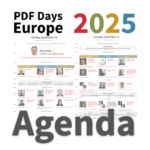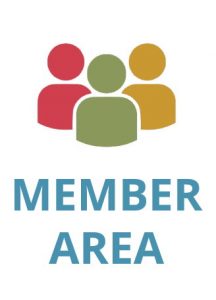PDF Day Australia Brings Together Users and PDF Experts

Matt Kuznicki has been actively involved with PDF products and technologies since 2000. He is a recognized expert in technical PDF and imaging matters and an active participant in PDF standards activities as well as the application of PDF and other document technologies to solve a variety of business problems. … Read more


Sydney, Australia -
 November 25 saw a great turnout of institutional and corporate PDF users for the inaugural PDF Day Australia. With a variety of leading PDF technology experts were on-hand, those present learned a great deal from the wide range of presentations offered as well as the substantive and candid discussions that followed the presentations.
November 25 saw a great turnout of institutional and corporate PDF users for the inaugural PDF Day Australia. With a variety of leading PDF technology experts were on-hand, those present learned a great deal from the wide range of presentations offered as well as the substantive and candid discussions that followed the presentations.
Designed around two tracks, PDF Day Australia focussed on PDF for archiving and on accessible PDF documents, with a number of expert presentations on both subjects.
Attendees learned about changes coming in the upcoming PDF 2.0 standard from CiSRA's Peter Wyatt, co-host of PDF Day Australia and project co-leader for the ISO 32000 working group developing the PDF 2.0 standard.
The day started with brief introductions to the standards based on PDF technology - PDF/A, PDF/UA, PDF/E, PDF/X and PDF/VT. In just two minutes apiece, attendees got a condensed overview of PDF's specialized standards for long-term archive presentation, for universally accessible documents, for engineering industry documents (including 3D content) and for print-industry publications and variable and transactional printing.
The "Document of Record" track zeroed in on the many ways in which PDF technology can be leveraged to meet a wide variety of business needs. Starting from an introduction to PDF/A the sessions included topics ranging from validation to support for PDF in the larger marketplace to the challenges of archiving dynamic content, the latest in PDF/X technology for printing, and more.
The subject of accessible PDF documents was covered by several presentations plus a roundtable session. The accessibility track included technical presentations on creating accessible PDF files and some difficulties faced, as well as broader presentations on the meaning of accessible documents and audience expectations. Via a video session from Canada, Adam Spencer of Accessibil-IT offered his observations on how heated opinions about different document formats have actually led to an overall reduction of accessibility for document content.
PDF Day Australia was not just presentations, but was also a very interactive event featuring a number of discussions. James Teh from NVAccess provided enlightening insights on PDF accessibility from a blind user's perspective. Mr Teh also provided some cogent advice for the industry on fostering more widespread accessibility support in PDF readers and workflows. A fascinating dialog resulted on the role of authors in considering accessibility and viewer compatibility from the start of the document lifecycle, and the seemingly never-ending challenge of helping authors understand how their choices in content and formatting can lead to problems later on.
For the PDF experts who presented at PDF Day the following week was fully occupied with a week of meetings devoted to advancing the next-generation specifications for PDF, PDF/A, PDF/UA and PDF/E.
We look forward to another PDF Day in Australia!




